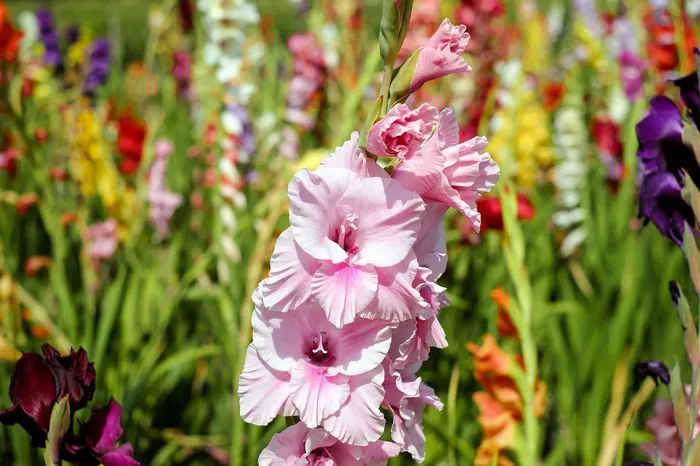Courage is a virtue celebrated across cultures and throughout history. It’s the inner strength that propels individuals to face challenges, overcome adversity, and stand up for what they believe in. Symbolism has long been intertwined with human expression, and flowers, with their diverse colors, shapes, and fragrances, have served as powerful symbols in various contexts. In the language of flowers, known as floriography, different blooms carry specific meanings that convey sentiments ranging from love to resilience. In this article, we explore ten flowers that symbolize courage, offering insights into their historical significance and cultural interpretations.
1. Red Poppy (Papaver rhoeas)
The red poppy is perhaps one of the most iconic symbols of courage, particularly in Western cultures. Its association with courage stems from its prevalence in war-torn landscapes, notably inspired by the fields of poppies that bloomed across Flanders during World War I. The poignant poem “In Flanders Fields” by Lieutenant Colonel John McCrae immortalized the red poppy as a symbol of remembrance and courage in the face of adversity.
2. Gladiolus (Gladiolus spp.)
Named after the Latin word “gladius,” meaning sword, the gladiolus embodies the spirit of courage and strength. With its tall, sword-like spikes and vibrant blooms, the gladiolus symbolizes resilience and moral integrity. In ancient Rome, gladiators carried gladiolus flowers into battle as a talisman for protection and courage, believing that the flower would bring them victory and honor.
3. Courage Rose (Rosa ‘Courage’)
As its name suggests, the Courage rose is a symbol of bravery and fortitude. Bred specifically to honor the victims and survivors of the September 11, 2001 attacks, this rose cultivar represents the resilience of the human spirit in the face of tragedy. With its deep red petals and strong fragrance, the Courage rose serves as a tribute to those who demonstrate courage in times of crisis.
4. Lion’s Tail (Leonotis leonurus)
Native to South Africa, the lion’s tail is a striking flowering plant known for its fiery orange blooms and spiky appearance. In African folklore, the lion’s tail is associated with courage and protection, believed to ward off evil spirits and instill bravery in those who possess it. The plant’s distinctive appearance, reminiscent of a lion’s mane, reinforces its symbolism of courage and strength.
5. Purple Coneflower (Echinacea purpurea)
The purple coneflower, also known as echinacea, is revered for its medicinal properties and symbolic significance. In Native American cultures, particularly among the Plains tribes, echinacea was traditionally used to bolster immunity and promote healing. Beyond its physical benefits, the purple coneflower is associated with courage and endurance, embodying the resilience of indigenous peoples in the face of adversity.
6. Sunflower (Helianthus annuus)
With its bright, radiant petals and towering stature, the sunflower exudes warmth, optimism, and courage. In Greek mythology, the sunflower is linked to the story of Clytie, who transformed into a sunflower after pining for the sun god Apollo. As a symbol of loyalty and unwavering devotion, the sunflower represents the courage to persevere and remain steadfast in pursuit of one’s goals, even in the darkest of times.
7. Bluebell (Hyacinthoides non-scripta)
The delicate bluebell holds special significance in Celtic folklore, where it is associated with courage and protection. According to legend, bluebells were believed to ring out to summon fairies to protect warriors in battle. In the language of flowers, bluebells symbolize constancy and steadfastness, serving as a reminder of the courage required to confront adversity with grace and resilience.
8. Yarrow (Achillea millefolium)
Named after the mythical Greek hero Achilles, yarrow has a long history as a symbol of courage and healing. In ancient times, yarrow was used on battlefields to staunch bleeding wounds and alleviate pain, earning it the nickname “soldier’s woundwort.” Beyond its medicinal properties, yarrow is revered for its ability to thrive in harsh conditions, symbolizing resilience and courage in the face of adversity.
9. Chrysanthemum (Chrysanthemum spp.)
In many Asian cultures, the chrysanthemum holds deep symbolic significance as a symbol of courage, longevity, and resilience. In Japan, the chrysanthemum is the national flower and is associated with the Imperial family, symbolizing power and nobility. During the annual Chrysanthemum Festival, or “Choyo,” the flower is celebrated for its beauty and enduring qualities, serving as a reminder of the courage required to overcome life’s challenges.
10. Courage Lily (Lilium ‘Courage’)
The Courage lily, with its elegant trumpet-shaped blooms and vibrant hues, symbolizes courage and inner strength. Bred to commemorate significant events or honor courageous individuals, this hybrid lily cultivar serves as a living testament to the power of resilience and determination. Whether displayed in gardens, bouquets, or memorial tributes, the Courage lily inspires hope and courage in all who encounter its beauty.
Conclusion
In conclusion, flowers have long served as powerful symbols of courage, resilience, and inner strength across cultures and throughout history. From the red poppy of Flanders to the Courage rose of 9/11, each bloom carries its own unique significance, reminding us of the human capacity to overcome adversity with grace and fortitude. By embracing the symbolism of these ten flowers, we honor the courage within ourselves and pay tribute to those who have demonstrated extraordinary bravery in the face of challenges.


